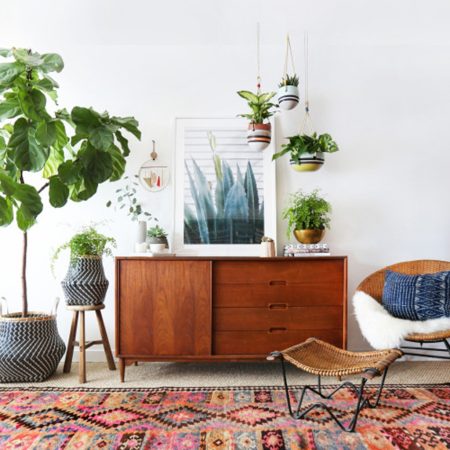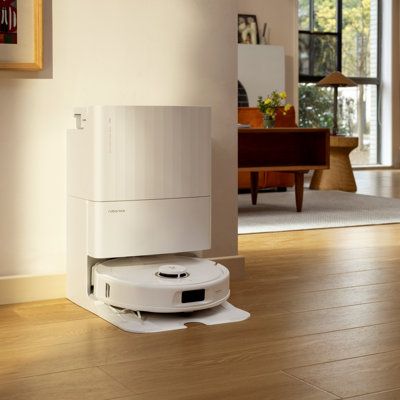Here at Style Salute, we are all for empowering females – it’s what we live to do. We’re always on the lookout for new ways to boost productivity so women can continue to run the world! Especially now during the holidays, productivity is starting to decline and it’s hard to focus! We did a ton of research and found that plants can do wonders for improving office air quality and your mental health. Office plants are a great way to not only add life in too often times dull spaces, but they can also help you find the energy to power through those long work days.
To find out more about how to incorporate plants into office spaces, we turned to our go-to source for plant related advice, Lilah of Mickey’s Hargitay Plants. Lilah is an expert on all things plants and flowers. From how to keep plants alive indoors to how often to water and how to select low-maintenance plants, Lilah answers all about indoor plant care basics. We asked her the most important questions that you need to know to keep your office plants looking healthy and happy for months to last!
Read on for Lilah’s answers to all your plant-care questions and shop her plant picks!
1. What types of plants are the easiest to maintain?
“The most important thing to consider when you choose a plant is how much light you will be able to provide for it–some degree of light is pretty much nonnegotiable for all plants. That being said, choosing light-flexible plants is a smart move for an office, and Dracaenas, Chinese Evergreens, and and Peace Lilies are some of the best.
Dracaenas can typically be identified as having a slender stalk that sprouts pom poms of spiky leaves (the darker the shade of the leaf, the more tolerant it will be of lower light conditions), and will offer plenty of height if you need a larger plant.
For something with plenty of character, Chinese Evergreens have beautiful patterns and some truly unusual coloring if you need to bring life to a dreary corner.
Peace Lilies offer a lot of elegance and class to any space, and if you’re hoping for a flowering plant in your office these are hands down the most reliable and consistent.
There are plenty of other choices to consider based on what kind of light your office has or where you intend to put your plant–Kentia or Bamboo Palms, Spider Plants, Snake Plants, and Zi Zis are also fabulous.
And a final note on this subject–do not assume that you can get whatever plant you want and simply stick it out in the sun every once in a while. For one thing, most indoor plants will burn up if they sit outside in the sun, and for another, switching a plant around like that could easily induce some very bad shock. Plants appreciate it if you don’t move them around too much and allow them to get used to their environments.”
2. What is a fool proof way to keep plants looking healthy?
“No plant stays the same forever, and it’s up to you to maintain it every once in a while as needed. Sometimes the plant is ailing for whatever reason, sometimes it lets go of an old leaf and sprouts a new one to replace it, sometimes it’s just transitioning into a new space…whatever the reason, if you know it’s healthy and happy but it still looks grubby–grab a pair of scissors and give it a haircut. If a leaf is mostly gone, cut it off with its stem and either use your fingers or whatever implement you have to to make it quick and clean so you’re not yanking back and forth and beating your plant up. If you have a bad looking tip or edge, only cut off the damaged part and imitate the shape of the leave so it looks natural. For example, dracaenas have leaves that end in a sharp point, so if it had a brown tip you would basically cut that off in a “V” shape as opposed to cutting bluntly straight across, which would look awkward. Also, plants’ leaves accumulate dust and grime like any other surface, and wiping with a damp cloth (you can just use water), is all you really need to do to spruce it back up again.”
3. How often do you recommend watering plants?
“Watering often winds up being a case-by-case basis for most plants. Some definitely like to dry out in between waterings, and some are prima-donna goldilocks and would like their soil to be juuuust the right kind of damp all the time.
Additionally, watering cycles can change based on the amount of light the plant is getting–so something that needs to dry out for a few weeks before you water it again might wind up needing even more time than you think to become ready for another drink if you put in a shadowy corner. I would ask a plant care professional to help you figure out when and how much to water regardless, but there are certainly some signs to watch out for to keep you on track.
If you know your plant is getting the light it requires but you’re seeing discoloration (usually a sickly yellow), you’re probably overwatering. If the plant is sagging significantly and its ends are looking crispy and burnt, it’s probably thirsty.
Also, good drainage is key! This means that when you water the excess has got to come out somewhere or it will sit around the plant’s roots and begin to rot them. There are plenty of strategies to ensure your plant has good drainage–keeping a saucer under your pot, watering the plant in the sink, and keeping the plant in its plastic container and disguising it inside of a prettier pot are just a few.”
4. Why are plants better for office spaces than flowers?
“Flowers are inconsistent. They bloom and serve their purpose and then the plant is usually a perfectly nice, unassuming character. But if you want flowers–go get a bouquet. Also, flowering plants tend to need a lot of light–as in “being outside” kind of light. Not usually a good fit for an office. If you must, I would recommend an anthurium or a peace lily. Peace lilies are fantastic and can tolerate lower light, and anthuriums are vivid and gorgeous but will definitely appreciate a very bright space. Both are somewhat associated with a pop art 80s vibe and since the art world has been having a love affair with houseplants for a while they seem to be having a moment right now.”
5. Is there anything you suggest adding to the soil to keep plants looking healthy?
“Typically there are only two kinds of soil to worry about with plants–potting soil and succulent/cactus mix. Succulent/cactus mix is course and well-draining, and potting soil is more dense and soft. It’s important to set your plant up with the right kind to help it process its water appropriately, but you shouldn’t need to really worry about it for a while because when you initially bring your indoor plant home it’s best not to transplant for at least two weeks (so it can get used to its new place first), or for several months or years if you can help it. The idea is that they don’t like to experience too many shocks, so you should keep them in a chill, stable, undisturbed state if you can help it.And of course every situation can be different and no one wants to look at a tacky plastic pot for years, so again I would consult with a professional about this situation to see what will work best for both you and your plant.
As for food, in most cases your plant won’t die if you don’t feed it, but it can help a plant that’s in recovery for whatever reason or if you would like to encourage new growth. I would recommend a plant-based nutrient that’s gentle enough that you can use it every time you water, so you don’t need to worry about whether or not you fed the plant that month and accidentally wind up frying it to death with a bunch of sketchy chemicals. “
For more inspiration and tips, follow @mickeysplants. And to shop more of the best houseplants for indoors, check out our boutique, the best houseplants, according to NASA.
EXPLORE MORE:
Related Stories
Trending Stories
Thanks
for joining!
Thanks
for joining!
We send good emails.
Subscribe Now.






















